
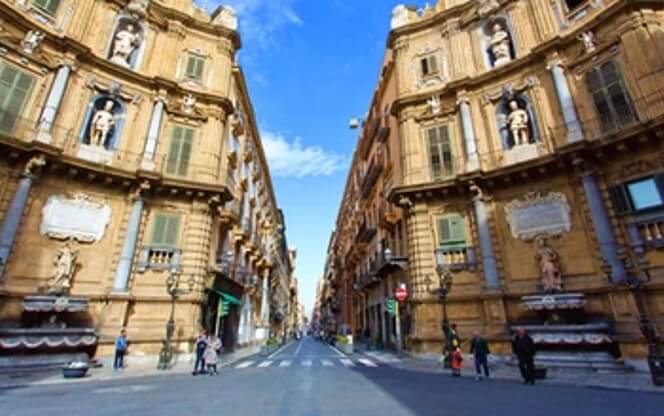
During your stroll through Palermo, you will pass many larger and smaller squares. However, when you reach the Piazza Palermo Quattro Canti, you should consciously take some time. Because this crossroads not only has a very special history. It also impresses with its unique design.
by: Eugenio Rusignuolo | 27 June 2021
Did you know that the Spaniards were in charge in Palermo for a long time? They are also responsible for the creation of the Quattro Canti in the 17th century. The starting point for today's square was the Cassaro, Palermo's main artery since the 9th century.
In the meantime, the street is called Corso Vittorio Emanuele. In any case, in the 17th century, the Corso was widened and extended towards the east-northeast until it reached the sea. The intersection of the Palermo Quattro Canti was finally created when the Spanish viceroy Maqueda had Via Nuova built at right angles to Corso Vittorio Emanuele. Today, this is appropriately named Via Maqueda.
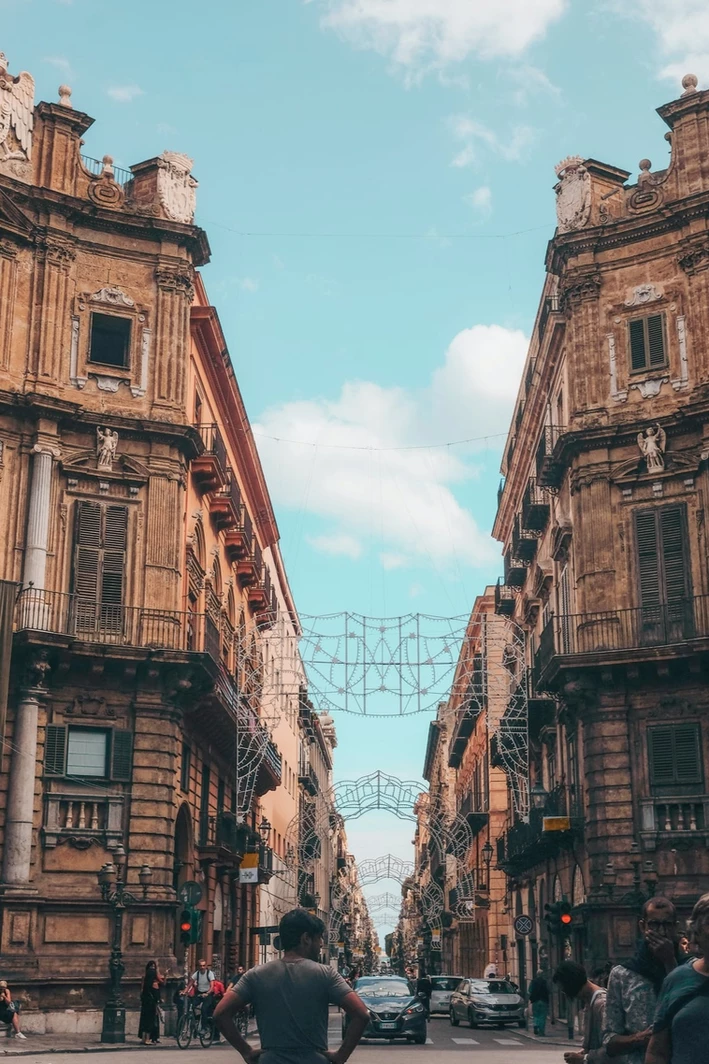
Where the two streets meet, the Piazza Palermo Quattro Canti was finally designed. The name is somewhat misleading: translated, it means "four corners". In fact, however, the piazza is octagonal. Anyway, Quattro Canti is the unofficial name of this architectural gem.
The square is actually called Piazza Vigilena, in honour of the Spanish viceroy Juan Fernandez Pacheco de Villena. He hired the Florentine architect Giulio Lasso to build the four palazzi that border the square.
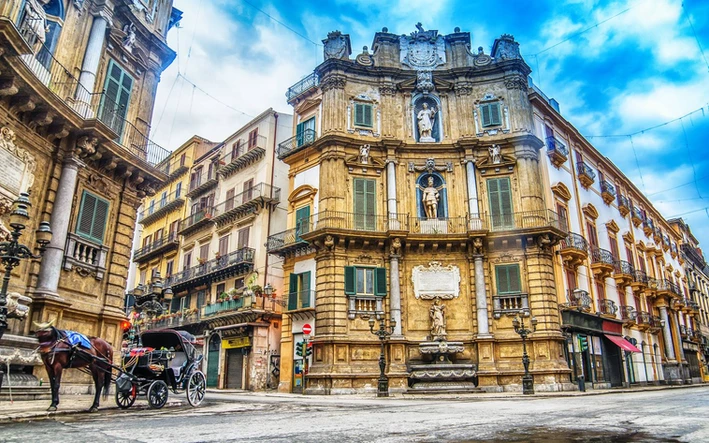
Giulio Lasso already had a resounding name as a sculptor and architect when he was commissioned to build the four palaces in the Piazza Palermo Quattro Canti. He began work in 1608. He did not live to see the completion of his main work in 1620: Lasso died in Palermo in 1612. In his place, Mariano Smiriglio completed the imposing buildings, which are considered a prime example of Sicilian Baroque.
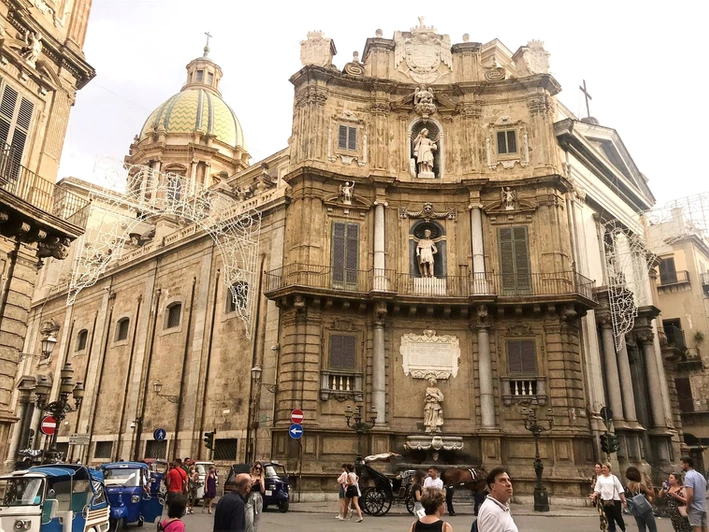
The best way to grasp the artistry of the extraordinary façade design is with a little distance. For a holistic view of one of the four palaces, it is best to stand on the opposite side of the street.
At first glance, the magnificent buildings appear uniform. In fact, they have many things in common. These include the concave façades, the subdivision by means of columns and the fountains that decorate the fronts in each case. But the tension lies in the finely crafted details.
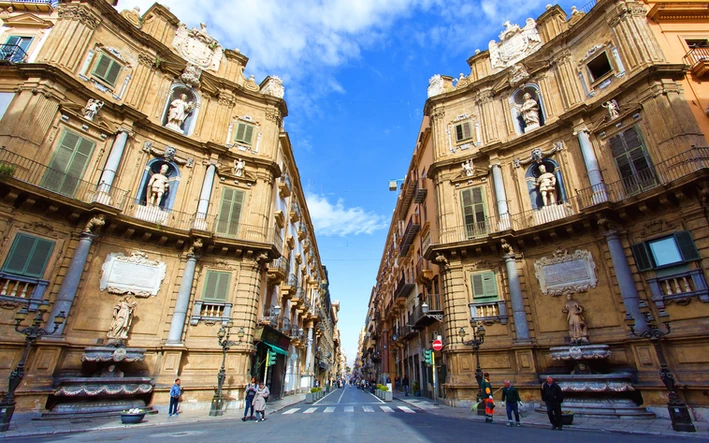
The palazzi in the Piazza Palermo Quattro Canti impress with a distinctive symbolic language, which is also reflected in the popular name for the square: the Palermitani call it Teatro del Sole, the Sun Theatre. Because at any time of day, one of the façades is illuminated by the sun.
Fittingly, the fountains and statues on the palace fronts symbolise the four seasons: spring (south-southwest), summer (west-northwest), autumn (north-northeast) and winter (east-southeast)..
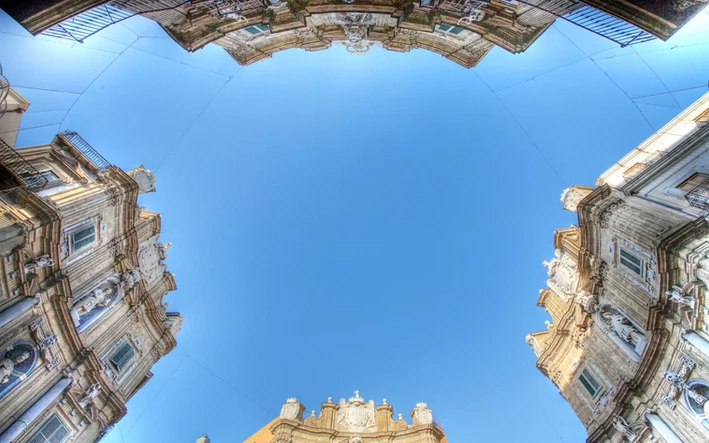
In the centre of each façade is a central niche. In it are statues of the Spanish kings Charles V, Philip II, Philip IV and Philip III. The ensemble is completed by the patron saints Cristina, Ninfa, Oliva and Agatha.
Now go closer. Do you see the finely crafted decorations on the fountains? Can you feel the attention to detail that the builders poured into their works? - Simply impressive, don't you think? The Piazza Palermo Quattro Canti is certainly one of the most fascinating squares in Italy. Give the ensemble time to unfold its effect and dream yourself back to an era when noble lords and magnificent carriages characterised the city's streetscape.
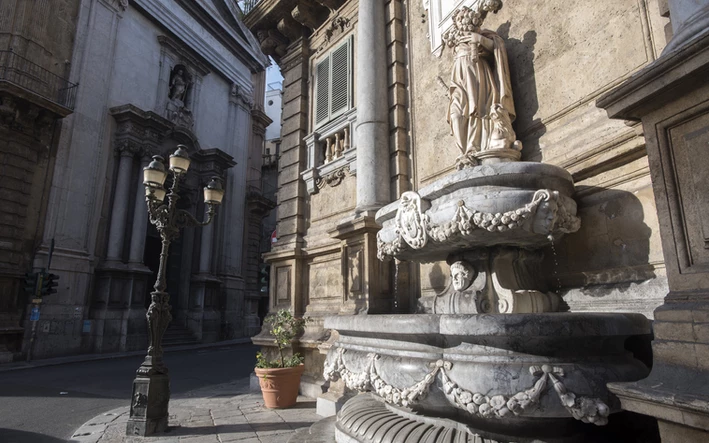
Our tip:Meanwhile, the street Corso Vittorio Emanuele has been closed off to cars and turned into a pedestrian zone from Quattro Canti towards the east-northeast to Piazza Marina. Stroll through the traffic-calmed street on foot and enjoy a cool drink, a caffè or Parlemite street food in one of the numerous street bars and snack bars.
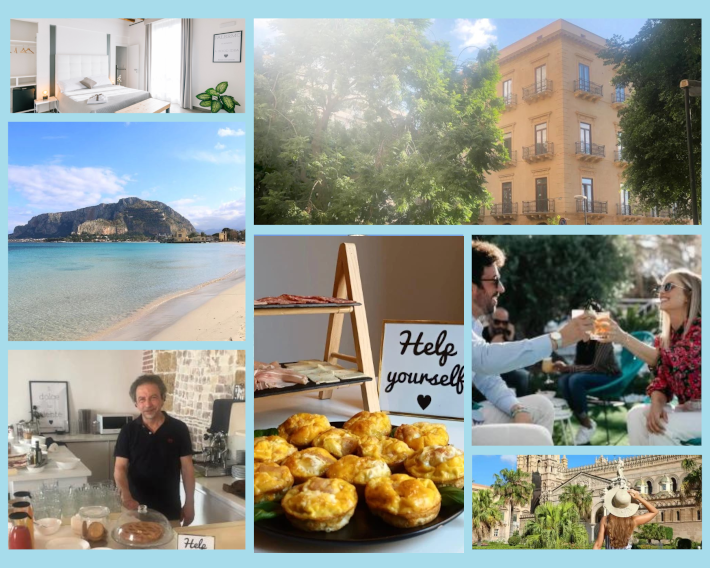
Many travellers want quality accommodation with an authentic atmosphere. At Boutique BnB Dolcevita we offer modern rooms and warm service so you can feel like a local for a while.
More info on the Boutique BnB Dolcevita